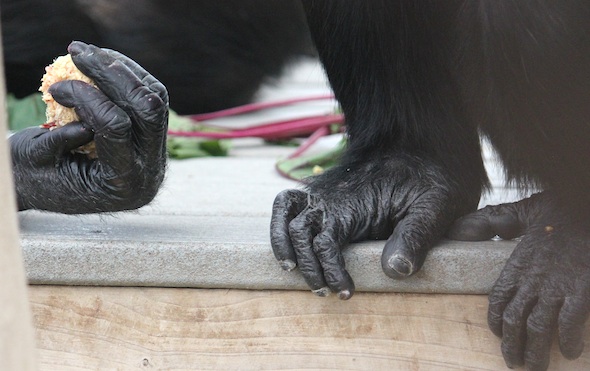
Suzy lived on Lintz’s estate in Brooklyn, NY, along with hundreds of other animals in Lintz’s collection, including more than a dozen other young chimpanzees. Suzy was captured as an infant in the wild in Africa and shipped by boat in 1931 to Gertrude Lintz, a wealthy socialite and exotic animal collector. To better understand whether lifetime loading or genetics has a greater influence on the development of phalangeal curvature, Wallace and his collaborators took advantage of a unique and rather strange piece of evidence, the hand and foot bones of Suzy.

In this case, curved phalanges could simply be an evolutionary vestige and not necessarily a direct indication of how much time was spent in trees.” “But other researchers disagree and think that rather than being caused by loading during life, phalangeal curvature develops spontaneously due to genetics. If that’s true, then it’s reasonable to infer that fossil hominin phalanges would not be curved unless those individuals were actually spending a lot of time using their hands and feet to move in trees,” Wallace said. “Just like your muscles get bigger when you lift weights, many researchers think that phalanges become curved by the forces placed on hands and feet.

The first group of researchers thinks that phalangeal curvature develops throughout life in response to mechanical loads placed on figures and toes during climbing and hanging, whereas the other group thinks that the trait is largely genetically determined. Other researchers, however, strongly disagree.” "With this in mind, some researchers think phalangeal curvature in fossil hominins is strong evidence of substantial time spent in trees.

This is interesting because when we look at different types of living primates, the only species that have curved phalanges are those that spend lots of time climbing and hanging from tree branches. Wallace explained the debate: “Several fossil hominin species have curved finger and toe bones, including very ancient species as well as some that lived only a few hundred thousand years ago. The reason this recently published paper is of interest and important is because Suzy’s hand and foot bones help resolve a big debate in paleoanthropology about what phalangeal curvature in fossil hominins can tell us about the locomotion of our ancestors. “I'm especially interested in the transition from our most ancient human ancestors, who walked on the ground as well as climbed trees, to the earliest humans who were fully committed to terrestrial locomotion.” “I study how humans evolved to use their bodies to move, and I explore how the way humans use their bodies has changed over time,” Wallace explained.


 0 kommentar(er)
0 kommentar(er)
